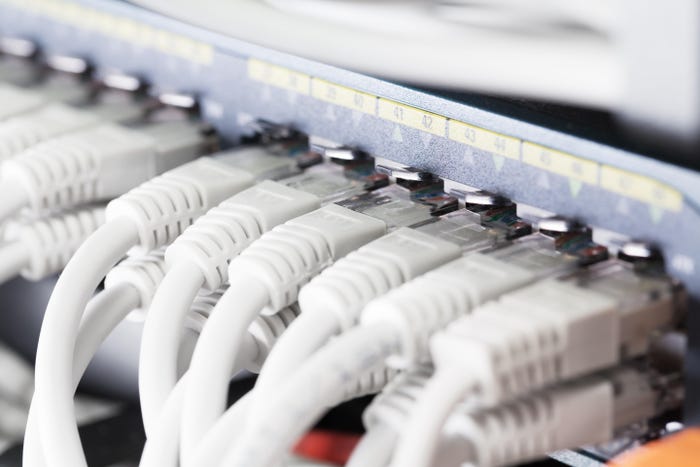Intel Calls Solid-State Drives 'the Future of Storage'
SSDs won't replace all hard-disk drives, but the technology will become a major force in IT in the next few years, the company says
October 22, 2008

This past September, Intel Corp. (Nasdaq: INTC) announced that it had begun shipping X-18M and X-25M Mainstream SATA (serial advanced technology attachment) solid-state drives (SSDs) for laptop and desktop computers. The drives are based on multi-level cell (MLC) NAND flash technology, and Intel believes that its combination of flash memory design and processor and computing experience places it in a unique position to fully deliver on the promises of SSD computing.
Building on that, Intel just last week began shipping X25-E Extreme SATA SSD drives that feature 50-nanometer single-level cell NAND flash memory technology.
Is Intel's entry into the SSD a game changer for corporate IT, or is Intel simply another addition to an already crowded playing field of SSD providers, which includes dozens of vendors and more on the way?
"We see SSDs as the future of storage, but we don't see them as a 100 percent replacement for HDDs [hard disk drives]," said Troy Winslow, Intel NAND Marketing Manager. "What we do know is that IT managers are already dealing with caps on power in the data center, and that there are areas of opportunity where SSDs are uniquely compelling."
Intel says its SSDs deliver value to data center green initiatives because they consume less power while also delivering higher performance. "If you can do more with less by reducing the number of data center components, power and space, you have a strong argument for lower total cost of ownership," said Winslow.Intel's aggressive move into SSDs will have an impact. "I don't see the Intel SSD announcement as an IT game changer," said Mike Karp, principal analyst with Enterprise Management Associates, a technology research firm. "However, whenever Intel gets into a market, IT takes notice."
Intel says that entering the SSD market allows it to optimize laptop, desktop and server processing.
"We have been in the flash memory market for more than 20 years," said Intel's Winslow. "We got into NAND because it is fundamental to computing. We also recognized that hard drives and memory were a bottleneck to feeding and supplying data to processors."
How great a bottleneck? Intel's research shows that while CPU processing will have grown by 175 times between 1996 and 2009, HDD performance has scaled upward by only 1.3 times over the same time period.
Intel also reports that when the X.18M and x.25 M SSDs were benchmarked against 5400 RPM HDD, Microsoft Office installed 40 percent faster, there was a 100 percent gain in exporting email in Microsoft Outlook, and there was 40 percent faster performance using Spywarescan with Windows Defender.The Intel SSD product family scales from 32-160 Gbytes. The multi-level cell (MLC) SSDs like the X.18M and X.25M are respectively, 1.8 inches and 2.5 inches in size, with a range of 80 Gbytes to 160 Gbytes.
"The multi-level flash memory architecture allows you to store two bits of information for every one bit of information that you would be able to store in a single-level flash architecture," said Winslow. "This means that you are effectively getting double density storage at half the cost -- but the drawback is that you are not able to cycle and erase the drive as often as you can with a single-level flash architecture." To cover the end of the market that wants more cycling, Intel has an X-25E Extreme SATA SSD with single-level cell that comes in a 2.5-inch disk with a storage range of 32 Gbytes to 64 Gbytes. The high end of the SSL SSD at 64 Gbytes is scheduled for delivery in 2009, as are the 160-Gbyte versions of the X.18M and X.25M MLCs.
Analyst Mike Karp thinks that Intel's SSD strategy is "a good move and not a gamble at all. Their strategy is to do everything they can to make processing look faster. Intel processors have followed the exponential expansion curve predicted by Moore's Law -- but disks continue to lag behind, acting as a major 'throttle' on the processing."
Intel is very bullish on SSDs. "We think that SSDs will be one of the largest technology markets by 2010-11," predicted Troy Winslow. "We believe that notebooks will offer SSDs as upgrades, and that some high-end servers and desktops will only come with SSDs. We are very optimistic about the uptake of SSDs by the enterprise market. We also recognize that not all solutions are created equal in an emerging technology, but we truly believe that we have architected and designed a strong solution. We will now leave that up for others to evaluate."
You May Also Like
2024 InformationWeek US IT Salary Report
Aug 15, 20242022 State of ITOps and SecOps
Jun 21, 2022


